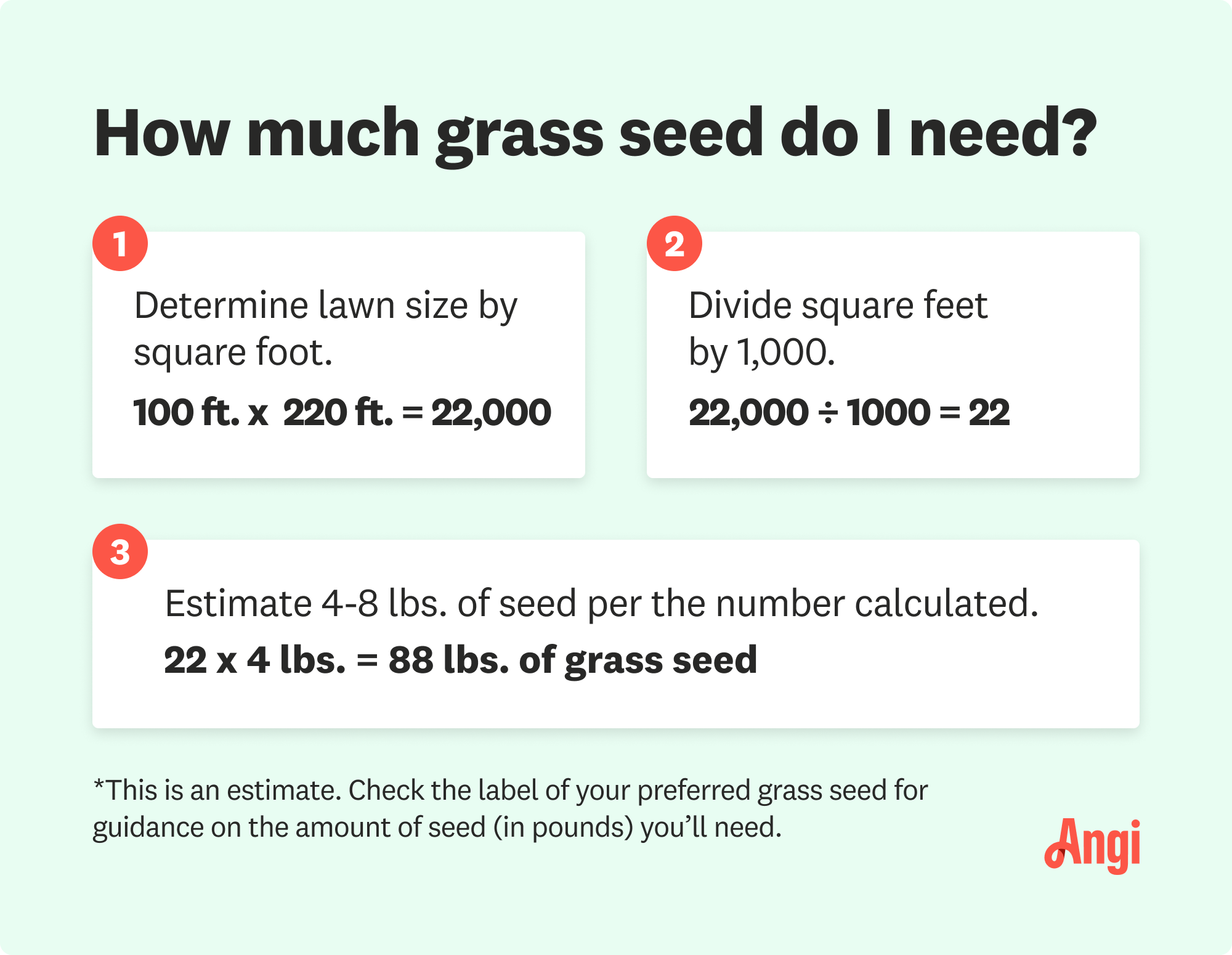
The cost to reseed a lawn can vary depending on the size of your yard and the condition of the soil. We’ll help you figure out the true cost of reseeding or overseeding your lawn, along with whether or not you should hire a professional.
Grass seed on top of soil is the way to grow


Grass seeds germinate best on the soil surface, avoiding the need for burial that may impede growth.
Prepare your soil by testing pH, addressing nutrient deficiencies, and ensuring a loose texture through aeration.
Plant grass seeds evenly on loose, fertile soil using tools like a broadcast spreader or rake.
Consider hiring a local lawn care service for comprehensive soil preparation, grass seed planting, and ongoing maintenance.
Whether you’re a novice gardener or a plant-growing expert, you’re likely accustomed to placing seeds under a light layer of soil to grow. It’s common to adopt this same mentality to your lawn, but will grass seed germinate on top of soil? The answer is yes. In fact, it’s the ideal method for your future lawn to flourish with the help of a lawn seeding professional. Here’s why (and how) to grow grass seeds on top of soil.

Unlike many other types of seeds, grass seeds will germinate on top of soil. This strategy is the best way to grow them, as the grass seedlings won’t be strong enough to grow through a top layer of soil. Grass seed is meant for sowing on the surface of soil—a process known as surface sowing—where it will lay, root, and eventually sprout. Burying it in soil isn’t necessary and may impede its growth or stop it altogether.

Learning how to prepare soil for grass seed is vital for growing a healthy lawn, as seeds need direct contact with healthy soil in order to germinate. Test your soil’s pH balance using a store-bought kit or hiring a local soil testing service. This step will determine the pH of your soil (turfgrass should ideally be between 6 and 7), as well as the nutrient deficiencies to amend with different types of fertilizer. Lime or chicken manure can raise the pH of the soil, while sulfur can lower it.
Aside from the proper pH and nutrient content, soil should also be loose to allow the grass roots to penetrate. If your soil is hardened and compacted, aerate it before sowing your grass seed. Use an aeration tool or rototiller and move over the compacted soil, pressing firmly to loosen and aerate the soil. You may need to add a fresh layer of topsoil if your soil is especially hardened or compacted. To ensure your grass germinates correctly, consider hiring a local lawn seeding service to guarantee positive results.

Since grass seed germinates on top of soil, you can plant it evenly across the surface of loose, fertile soil. Use a broadcast spreader or a rake to ensure the seeds are spread as evenly as possible for best results.
Once you’ve spread the seeds, add a light layer of hay, just enough that patches of soil are still peeking through. This additional step will shield the seeds from wind and hungry birds and help the soil retain moisture during the growth process. Be sure to use hay rather than straw—straw may contain weed seeds that can implant and germinate along with the grass seeds.
Follow up with a full watering to saturate the soil without flooding the seeds. Continue monitoring the seeds and keeping the soil moist as the seeds germinate and grow.
Depending on the type of grass seed, germination can take anywhere from seven to 21 days. Continue keeping the soil consistently moist to help it grow full and healthy. As for knowing when to mow new grass, wait around eight weeks after seeding, or until your grass can be mowed to a height of three inches.
Certain types of grass, like Bermuda and Zoysia grass, grow best at a high of 1½ to 2 inches. Never mow more than ⅓ of the grass height to avoid stressing your lawn.
Here are some tips to keep in mind to ensure a successful, thriving lawn:
Water new grass seeds at least twice daily to keep the soil moist.
Consider investing in guaranteed weed-free hay to ensure you’re not implanting weed seeds in your new lawn.
Choose the right type of grass seed that naturally thrives in your area’s climate and soil conditions.
Fix sparse areas by laying fresh grass seeds to germinate on top of the soil.
Hire a local lawn seeding service to help prepare tough soil, plant grass seeds, and maintain your lush, healthy lawn.
From average costs to expert advice, get all the answers you need to get your job done.

The cost to reseed a lawn can vary depending on the size of your yard and the condition of the soil. We’ll help you figure out the true cost of reseeding or overseeding your lawn, along with whether or not you should hire a professional.

Your total lawn care cost depends on several factors, including the type of service and lawn size. Our guide will cover what you can expect to pay for lawn care.

How much it costs to rent a lawn aerator depends on what kind you rent and how long you rent it for. Read on for the full details.

A lush lawn doesn't have to be an unattainable luxury. Use this guide to learn how to fix patchy grass throughout your yard.
Fertilizer burns can result in discolored or dead grass. These nine tips will help prevent lawn burn and keep your yard looking healthy and green with fertilizer.

Learn when the best time to mow new grass, plus some considerations to consider in this short informational guide for homeowners.